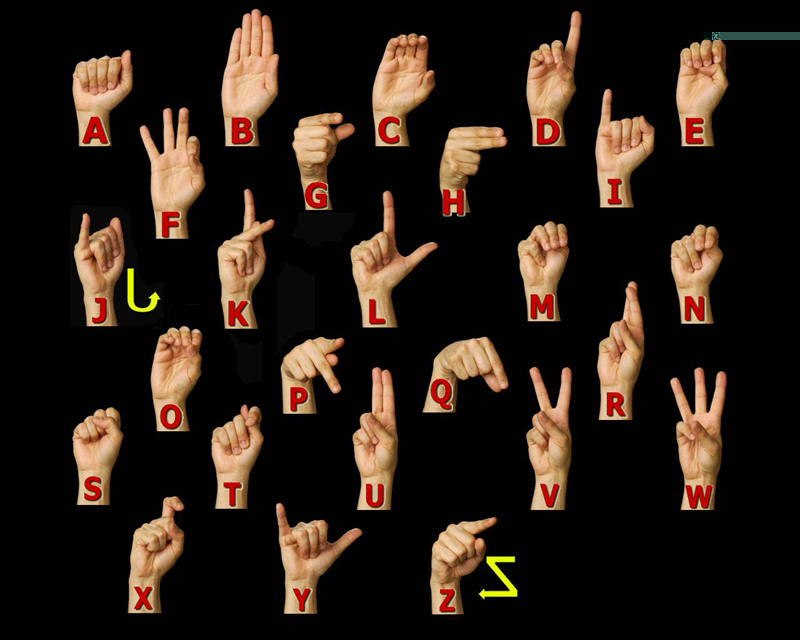
Finger Spelling Tips

|
Finger spelling is used in ASL to spell out English words. Each
country has its own, unique Manual Alphabet. The American Manual
Alphabet is one-handed, as opposed to the British two-handed Manual
Alphabet.
Which hand should you use? If your dominant hand is your right hand, use your right hand. If you are left handed, use your left hand. Do what is comfortable for you. These hand shapes, along with the Number hand shapes are used to make most of the signs you are learning. For example: The “A-hand” is used for the signs “aunt,” “girl,” and many more. The “5-hand” is used for the signs “mother” and “father.” The “3-hand” is used for showing the movement of vehicles, such as cars. HINTS FOR READING FINGERSPELLING (RECEPTIVE): 1. SOUND IT OUT: When reading finger spelling, don’t think, say, or read individual letters; sound them out, as syllables. 2. CONFIGURATION: Try to see the shape of the whole word, not the individual letters. For example: see Job as a shape not as J-O-B. 3. CONTEXT: Use the context of the conversation to help you decipher finger spelled words. For example: “Yesterday I went to the store, “W******T”. You know from the context of the finger spelled word that it is the name of a store starting with W and ending in T, with approximately 6-7 letters. Wal-Mart! It is very helpful to use context when reading finger spelling. 4. DON’T PANIC: when you don’t catch a fingerspelled word the first time. Just ask the person to spell it again and again until you get it. Deaf people want clear communication and to be understood. Don’t try to pretend you understand when you don’t, as it is obvious to them and leads to miscommunication. One more helpful hint: Remember the 3 “C”s. The first “C” is Communicate – don’t settle for unclear communication. Do what it takes to communicate clearly. The second “C” is Comprehension. Work for comprehension. The third “C” is stay Calm and relaxed. If you remember all of these tips and practice, practice, practice, you will be successful in your attempts to communicate clearly. WHEN TO PRACTICE: While driving: When stopped at red lights, practice the colors: red, green, yellow. Or things you see around you: man, woman. Just be careful to keep your eyes and mind on your driving! Street signs and street names are good practice. While at home and sitting watching TV, spell words that you hear throughout the program. While reading the newspaper, pick out words to practice. Want to know the best way to practice? Interact with Deaf people! The more you see finger spelling, the faster your skills will improve. Don’t be afraid to ask someone to repeat. Stay calm MANUAL ALPHABET: While practicing the Manual Alphabet remember to spell in the space in front of your body, not in front of your mouth. Remember speed is not the goal; accuracy and clarity are the goals. HINTS FOR EXPRESSIVE FINGERSPELLING: 1. Hand Placement: Hold your arm comfortably at your side and spell in an imaginary square from shoulders to waist. Avoid spelling in front of your mouth. 2. Speed: Don’t work for speed. Work for clarity and accuracy. Spell neither too fast nor too slow. 3. Palm Orientation: Spell with your palm facing outward, not toward your face. Practicing in front of a mirror will help you remember to turn your hand out. 4. Practice as much as possible with Deaf native signers who will help you spell correctly. 5. Do not be afraid to ask for help. CULTURAL
INFORMATION:
|
Use the Browser Back Button to return to the previous page.